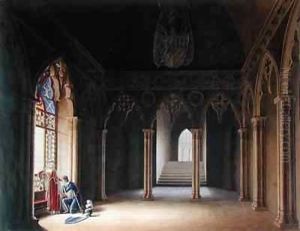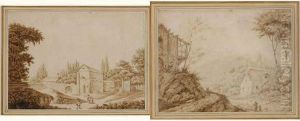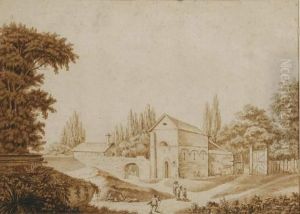Hortense de Beauharnais Paintings
Hortense de Beauharnais was born on April 10, 1783, in Paris, France, to Alexandre, Vicomte de Beauharnais, and Joséphine Tascher de la Pagerie. She was a significant figure in the Napoleonic era of French history, not only due to her own activities and influence but also because of her family connections. Her life was shaped by the tumultuous events of her time, including the French Revolution and the rise and fall of Napoleon Bonaparte.
Her father was guillotined during the Reign of Terror, and her mother later married Napoleon Bonaparte, making Hortense the stepdaughter of the future emperor. Hortense was educated at Madame Campan's boarding school at Saint-Germain-en-Laye together with other daughters of the French nobility, including Caroline Bonaparte, Napoleon's younger sister.
In 1802, Napoleon arranged for Hortense to marry his brother Louis Bonaparte. The marriage was not a happy one, but it produced three sons, including the future Emperor Napoleon III. Hortense became Queen Consort of Holland when her husband was made king by Napoleon in 1806. During her time as Queen, she was noted for her cultural patronage and became an important figure in promoting the arts in Holland.
Despite her royal status, Hortense's life was not without difficulties. She faced personal tragedies, including the deaths of two of her sons, and the separation from her husband in 1810. After Napoleon’s fall in 1815, Hortense was exiled from France and lived in Switzerland and then in Italy, where she focused on her artistic pursuits, including painting and music composition.
Hortense was also known for her memoirs, which provided a valuable insider's perspective on the Napoleonic court. Her writings, along with her patronage of the arts, left a lasting impression on French culture. She died on October 5, 1837, in Arenenberg, in the Swiss canton of Thurgau, and is remembered as a prominent figure in the history of France and the Napoleonic era.




